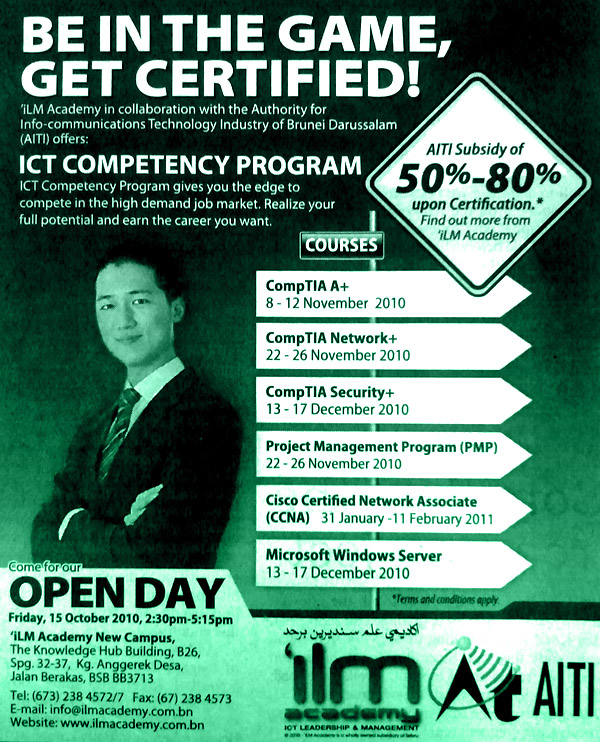
"The Authority for Info-Communications Technology Industry of Brunei Darussalam (AITI) will subsidise training for Bruneians and permanent residents on ICT basics and more advanced courses as it signed yesterday deals with three local ICT companies hired to conduct the training.
ICT awarded the contracts to AT e-Knowledge Solution, HAD Technologies Sdn Bhd and iLM Academy following a signing ceremony at the agency's office in Berakas yesterday.
The training is under AITI's ICT Competency Programme aimed at training Brunei's citizens on ICT basics, multimedia applications and other ICT-related skills in order to create a pool of highly skilled manpower and ultimately ensure Brunei's human resource is well-versed in ICT. The programme also aims to upgrade the knowledge of ICT experts.
Under the ICT Competency Programme, AITI will be subsidising 50 per cent to 80 per cent of the training fees of eligible participants, subject to the training course taken. The subsidies will be provided upon successful completion of the course.
AITI is targeting job seekers without ICT skills for the training."
Read further... (The Brunei Times)

